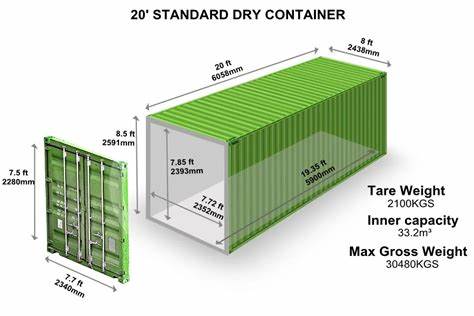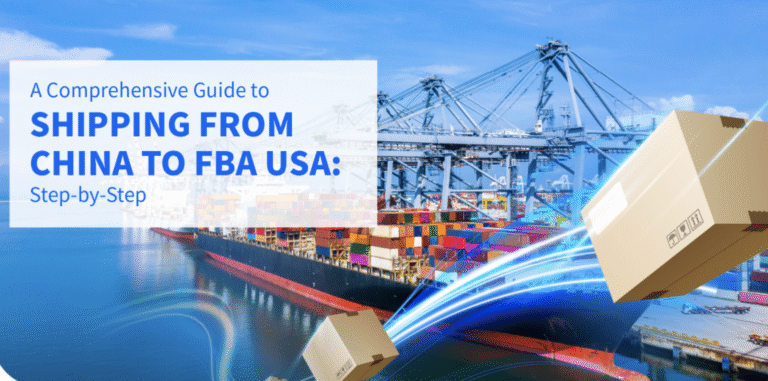20ft Shipping Containers: Specs, Uses & Buying Tips
If you’re exploring options for storage, transportation, or even modular construction, the 20ft shipping container is a name you’ll see everywhere.
It’s the gold standard in container logistics, and for good reason.
Compact, sturdy, and incredibly versatile, the 20ft container is used across industries, from global freight shipping to backyard office builds.
Table of Contents
Whether you’re a business owner, contractor, or DIY enthusiast, understanding the ins and outs of 20ft containers can save you time, money, and a lot of headaches.
What is a 20ft Shipping Container?
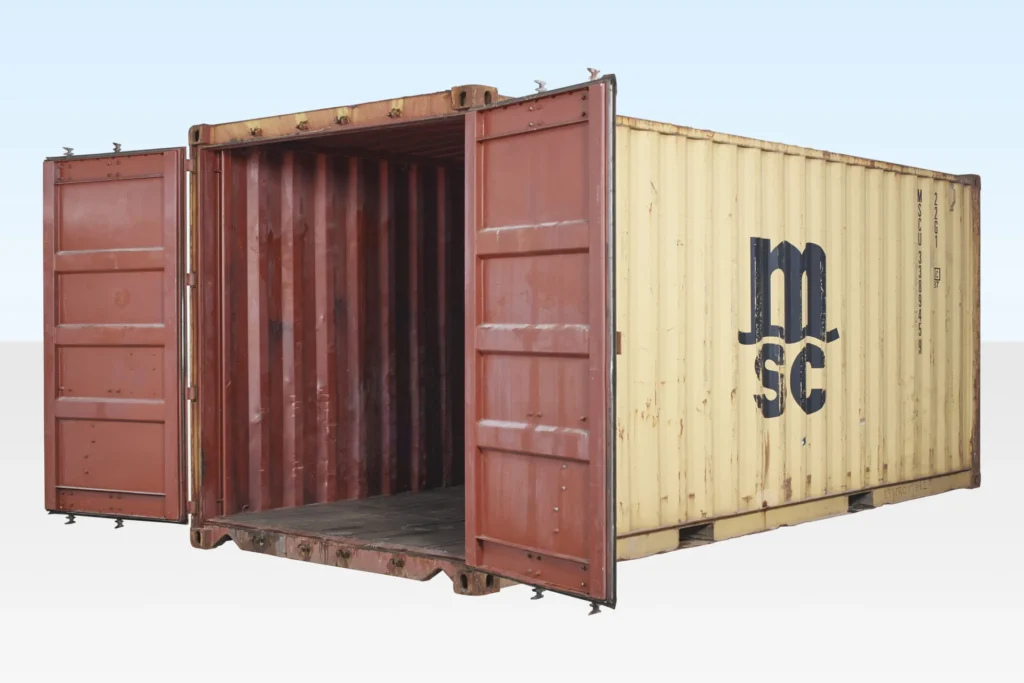
A 20ft shipping container is a standardized steel box used primarily for transporting goods across land and sea. As one of the most commonly used container sizes globally, it’s designed to fit easily on trucks, trains, and ships. But the use of these containers extends far beyond freight.
Core Features:
- Made of corrosion-resistant Corten steel
- Stackable and durable
- Designed to handle harsh environmental conditions
- Easy to load and unload with standard equipment
Used across logistics, construction, retail, and even agriculture, 20ft containers serve as:
- Freight storage units
- Temporary offices
- Pop-up shops
- Equipment shelters
Its universal design makes it an essential asset in both industrial and creative spaces.
Dimensions and Specifications of a 20ft Shipping Container
When planning to purchase or lease a 20ft container, knowing the exact specs is crucial. Here’s a breakdown of the standard measurements and features:
Standard 20ft Container Dimensions:
| Specification | Measurement |
|---|---|
| External Length | 20 feet (6.06 meters) |
| External Width | 8 feet (2.44 meters) |
| External Height | 8.6 feet (2.59 meters) |
| Internal Length | 19.4 feet (5.9 meters) |
| Internal Width | 7.7 feet (2.35 meters) |
| Internal Height | 7.9 feet (2.39 meters) |
| Tare Weight | 2,200 kg (4,850 lbs) |
| Max Gross Weight | 30,480 kg (67,200 lbs) |
| Capacity | ~33 cubic meters (1,170 cubic feet) |
Types of 20ft Containers:
- Standard Dry Containers – General purpose.
- Refrigerated (Reefer) – For perishable goods.
- Open Top – Ideal for heavy machinery.
- Flat Rack – For oversized cargo.
Having precise measurements helps with transportation planning and determining whether it fits on-site or in shipping lanes.
Common Uses of 20ft Shipping Containers
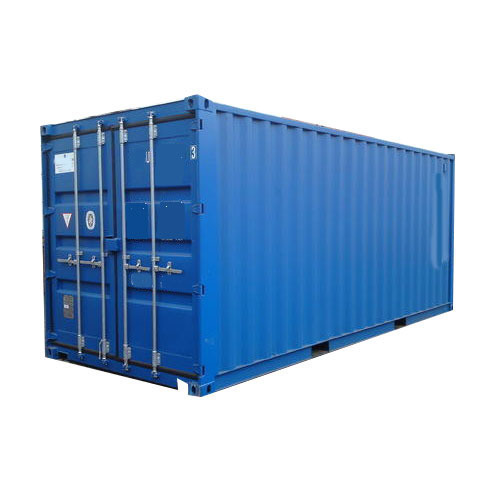
Thanks to its size and structure, a 20ft container is like a blank canvas. Here’s how businesses and individuals commonly put it to use:
1. Cargo Transport
- Most common use
- Ideal for shipping smaller loads or lighter cargo
- Used in international shipping, trucking, and rail logistics
2. On-Site Storage
- Construction sites use them for tool and material storage
- Retail stores use them for excess inventory
- Farms store machinery or feed inside
3. Mobile Offices
- Quick setup for temporary or permanent use
- Common on construction or remote project sites
- Can be insulated, electrified, and customized
4. Container Homes and Cabins
- Increasingly popular in sustainable housing
- Easily modified into livable units
- Often used as vacation rentals or tiny homes
5. Pop-Up Businesses
- Cafes, boutiques, or kiosks
- Attractive to entrepreneurs for mobility and style
- Can be relocated based on market demand
The possibilities are limited only by your creativity—and sometimes your local zoning laws.
Advantages of Using a 20ft Shipping Container
When compared to other storage or building solutions, 20ft shipping containers shine in several key areas:
1. Cost-Effectiveness
- Lower upfront cost than modular buildings or permanent structures
- Can be reused or resold, preserving value
2. Portability
- Easy to move with a forklift or crane
- Designed to fit standard transportation modes
3. Durability
- Built to withstand extreme weather, rough handling, and long-term use
- Made of weatherproof materials with rust resistance
4. Security
- Steel walls and lockable doors make it highly secure
- Can be equipped with advanced locking systems
5. Versatility
- Customizable for dozens of applications
- Usable across sectors—retail, farming, construction, education, and housing
In short, a 20ft container is not just a box—it’s a mobile, multi-functional, investment-worthy solution for a variety of needs.
Comparing 20ft vs 40ft Shipping Containers
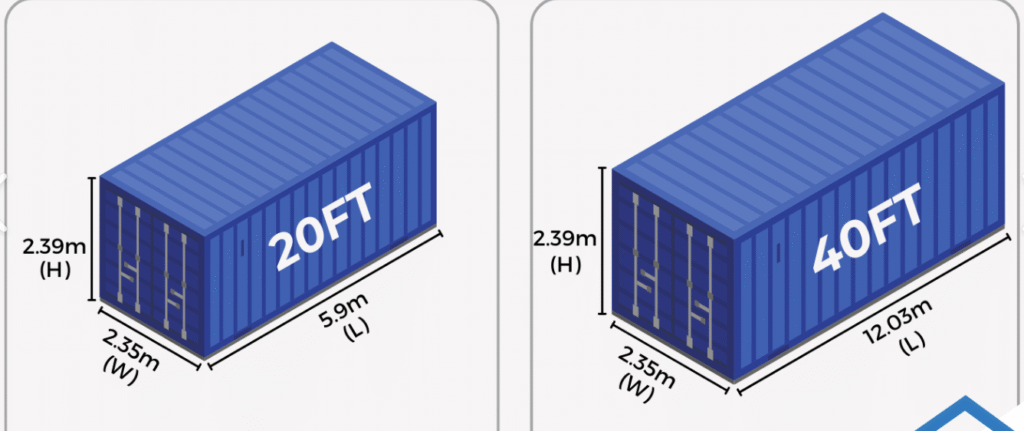
When choosing the right container size, it’s important to weigh your options. While the 20ft shipping container is a popular choice, the 40ft container also holds a strong presence in logistics and construction. Let’s compare both based on key factors:
Size and Volume:
| Feature | 20ft Container | 40ft Container |
|---|---|---|
| External Length | 20 ft | 40 ft |
| Internal Volume | ~1,170 cubic ft | ~2,390 cubic ft |
| Tare Weight | ~4,850 lbs | ~8,380 lbs |
| Payload Capacity | ~62,350 lbs | ~58,820 lbs |
Use Case Considerations:
- 20ft containers are ideal for heavy, dense cargo (e.g., metal parts, machinery).
- 40ft containers are better for voluminous cargo that isn’t necessarily heavy (e.g., furniture, textiles).
Cost Efficiency:
- On a per-cubic-foot basis, the 40ft option is more cost-effective for shipping large volumes.
- However, 20ft containers are often easier to store, transport, and maneuver in tight spaces.
Bottom Line:
Choose a 20ft shipping container if your focus is on mobility, budget-friendliness, or heavy-duty applications in smaller volumes. Opt for 40ft if you’re dealing with high-volume, lightweight items or need more space in one unit.
New vs Used 20ft Shipping Containers
One of the first decisions buyers face is whether to purchase a new or used container. Both options have their pros and cons depending on your budget, intended use, and aesthetic preferences.
New (One-Trip) Containers:
- Used only once to ship goods from the manufacturer to the seller
- Typically in near-perfect condition
- Higher upfront cost
Pros:
- Clean, undamaged interiors
- Ideal for custom modifications
- Longer lifespan
Cons:
- More expensive (20–30% higher than used)
Used Containers:
- Previously used in global shipping
- May have dents, rust, or repairs
Pros:
- Budget-friendly
- Environmentally sustainable (reuse)
Cons:
- Appearance may be rough
- Shorter remaining lifespan
Inspection Checklist:
- Check for rust, corrosion, and structural integrity
- Inspect door seals and locking mechanisms
- Smell the inside—strong odors could indicate chemical contamination
Whether new or used, a well-inspected container can serve you for years with proper maintenance.
Pricing Breakdown for 20ft Shipping Containers
Understanding the price landscape helps you plan your budget and avoid overpaying. The cost of a 20ft shipping container can vary based on factors like location, condition, and market demand.
Average Prices (as of 2025):
| Condition | Price Range (USD) |
|---|---|
| New | $3,000 – $5,000 |
| Used | $1,500 – $3,000 |
| Rental (monthly) | $75 – $200 |
Factors Affecting Price:
- Container condition (new vs used)
- Location (urban vs rural)
- Delivery fees and distance
- Supply chain disruptions (can cause price spikes)
Where to Buy:
- Local container depots
- Online marketplaces (e.g., ContainerAuction, eBay, Craigslist)
- Container suppliers like Conexwest, Triton, and SeaBox
Money-Saving Tips:
- Buy in bulk if possible
- Compare prices from 3–5 vendors
- Look for seasonal discounts or surplus inventory sales
Budget wisely and don’t forget to include delivery charges in your total cost.
How to Buy a 20ft Shipping Container
Purchasing a container may seem straightforward, but there are key steps to ensure a smooth and satisfactory transaction.
Step-by-Step Buying Process:
- Determine Your Needs:
- What’s the primary use—storage, modification, or transport?
- Do you need new or used? Specialized container?
- Research Suppliers:
- Look for companies with positive reviews and transparent policies.
- Request Quotes:
- Include delivery fees, taxes, and optional modifications in your inquiry.
- Inspect the Container:
- Either visit in person or request recent photos and inspection reports.
- Negotiate Terms:
- Especially for bulk or repeat purchases.
- Confirm Delivery Logistics:
- Ensure your site is accessible for a delivery truck.
- Prepare the ground (level, stable, accessible).
- Finalize Payment and Delivery:
- Use secure payment methods.
- Track the delivery and inspect upon arrival.
Important Questions to Ask Sellers:
- What is the container’s age and history?
- Are there any visible damages?
- Is delivery included in the price?
- Do you offer a warranty or return policy?
Following a structured approach minimizes risk and ensures you get value for your money.
Renting vs Buying a 20ft Shipping Container
Not ready to commit to a purchase? Renting a 20ft shipping container can be a smart, flexible solution depending on your project.
When Renting Makes Sense:
- Temporary job sites
- Seasonal storage needs
- Events and exhibitions
Cost Comparison:
| Option | Monthly Cost | Long-Term Cost (1 Year) |
|---|---|---|
| Rent | $75 – $200 | $900 – $2,400 |
| Buy (Used) | One-time $1,500 – $3,000 | Break-even in ~1.5 years |
Rental Benefits:
- Lower upfront costs
- No maintenance responsibilities
- Flexible terms (monthly or long-term)
Drawbacks:
- No ownership or asset value
- Customization often not allowed
Evaluate your long-term needs before deciding. If the container will be used for over a year, buying often becomes more cost-effective.
Modifying a 20ft Shipping Container
One of the most exciting aspects of a 20ft shipping container is its adaptability. With the right tools and a bit of imagination, this steel box can be transformed into just about anything—from homes and offices to retail shops and mobile labs.
Popular Modifications Include:
- Windows and Doors: Add natural light and accessibility.
- Insulation and HVAC: Crucial for comfort in extreme climates.
- Electrical and Plumbing: For powering tools, appliances, and water systems.
- Partitions and Flooring: Customize layout for different uses.
- Painting and Branding: Match your business colors or add anti-rust coatings.
Common Modified Uses:
| Use Case | Features |
|---|---|
| Mobile Office | Insulated, electric outlets, desks, windows |
| Pop-Up Retail | Serving window, branding, shelves |
| Tiny Home | Kitchenette, bathroom, sleeping area |
| Workshop | Reinforced floors, ventilation, tool racks |
Cost of Modifications:
- Basic insulation: $1,000 – $2,000
- Electrical installation: $500 – $2,000
- Doors/windows: $300 – $1,000 each
- Full container home buildout: $10,000 – $25,000+
DIY vs Professional Services:
- DIY: Lower cost but requires time, tools, and know-how.
- Professional: Faster, code-compliant, and often higher quality.
If you’re modifying for residential or business use, always check with local regulations to ensure your container meets building codes.
Transporting and Delivering Your 20ft Shipping Container
After purchasing a 20ft shipping container, the next step is getting it to your location—safely and affordably.
Delivery Methods:
- Tilt-Bed Truck (Roll-Off):
- Most common for short distances
- Truck tilts to slide the container onto the ground
- Flatbed Truck:
- Requires crane or forklift at destination
- Ideal for sites with loading equipment
- Chassis Delivery:
- Used for port pickups and long hauls
- Typically handled by logistics companies
Site Preparation Checklist:
- Level Ground: Gravel or concrete pads are ideal.
- Accessibility: Ensure the truck can enter, turn, and exit.
- Clearance: Provide at least 14 feet of height and 10 feet of width.
- Permits: Check if delivery or placement requires local approval.
Delivery Costs:
- Local (within 50 miles): $200 – $500
- Regional (50–200 miles): $500 – $1,000+
- Long Distance: Based on mileage and equipment needed
Tips for Smooth Delivery:
- Be present at delivery site.
- Mark the drop-off point clearly.
- Communicate with the driver about slope and obstacles.
Delivery is just as important as the container itself—plan thoroughly to avoid delays and damages.
Legal and Zoning Considerations
Before placing or modifying your 20ft shipping container, it’s crucial to navigate the legal landscape. Laws can vary significantly by city, county, and country.
Common Regulations to Check:
- Zoning Codes: Is your area zoned for residential, commercial, or industrial container use?
- Building Permits: Required for plumbing, electrical, or major structural changes.
- Foundation Requirements: Some cities demand permanent or semi-permanent foundations.
- HOA Rules: Homeowner associations may restrict or ban container usage.
- Appearance Standards: Some municipalities have aesthetic guidelines (e.g., paint color, landscaping).
Steps to Ensure Compliance:
- Contact your local building department.
- Describe your project and location.
- Apply for necessary permits.
- Schedule inspections post-installation.
Important Note: Even if your container is temporary, many areas still require documentation. Don’t risk fines or forced removal—always check the rules first.
Environmental Impact and Sustainability
More people are considering 20ft shipping containers as a sustainable alternative for building and storage—and it’s easy to see why.
Eco-Friendly Advantages:
- Recycling: Repurposing old containers keeps thousands of pounds of steel out of landfills.
- Lower Carbon Footprint: Building with containers produces less waste and uses fewer new materials.
- Minimal Site Disruption: Container structures often require less excavation and site work than traditional construction.
Sustainable Applications:
| Project | Eco Benefit |
|---|---|
| Container Homes | Reuse materials, energy-efficient design |
| Farming Shelters | Reduced materials and transport emissions |
| Solar-Powered Offices | Off-grid capability, minimal energy draw |
Green Building Tips:
- Use non-toxic, sustainable insulation (e.g., sheep’s wool, recycled denim).
- Install solar panels or green roofs.
- Harvest rainwater and recycle greywater.
Containers are an excellent option for anyone wanting to reduce their environmental impact without sacrificing durability or functionality.
Maintenance Tips for Longevity
Like any investment, your 20ft shipping container will last longer and perform better with proper care.
Routine Maintenance Checklist:
- Inspect for Rust:
- Especially around doors and edges
- Touch up paint or use anti-rust coating
- Check Seals and Gaskets:
- Ensure watertight integrity
- Replace cracked rubber seals
- Clean the Roof Regularly:
- Remove debris and standing water
- Prevent long-term corrosion
- Lubricate Hinges and Locks:
- Keeps doors opening smoothly
- Prevents freeze-ups in cold climates
- Inspect for Structural Damage:
- Dents and warping can compromise strength
- Address promptly with repairs
Storage Tips:
- Elevate on blocks to prevent ground moisture.
- Avoid placing in flood-prone areas.
- Consider installing vents for airflow.
A well-maintained container can easily last 20–30 years or more.
Conclusion
A 20ft shipping container is more than just a metal box—it’s a cost-effective, durable, and incredibly versatile solution for countless needs. From global shipping to backyard storage, mobile offices to eco-friendly homes, the potential is almost limitless.
Whether you’re renting for a project, buying for storage, or converting into a living space, understanding dimensions, pricing, legalities, and maintenance will empower you to make smart decisions. Start small, ask questions, and explore what this powerful asset can do for your business or lifestyle.
Have questions or need help finding a container? Drop a comment, share this guide, or subscribe for more expert insights.
FAQs About what is a 20ft shipping container
1. What are the standard dimensions of a 20ft shipping container?
A standard 20ft container is 20 feet long, 8 feet wide, and 8.6 feet tall. Internally, it holds around 33 cubic meters of space.
2. How much does a 20ft shipping container weigh?
The tare (empty) weight is approximately 4,850 lbs (2,200 kg), and it can carry up to 62,350 lbs (28,200 kg) when fully loaded.
3. Can I live in a 20ft shipping container?
Yes, with proper insulation, plumbing, and electrical work, it can be converted into a cozy home or guest suite.
4. How long does a 20ft container last?
With good maintenance, a container can last 20 to 30 years or longer, especially when not exposed to harsh marine environments.
5. Are 20ft containers waterproof?
Yes, they are designed to be wind- and watertight. However, it’s important to regularly inspect and maintain seals and doors.

